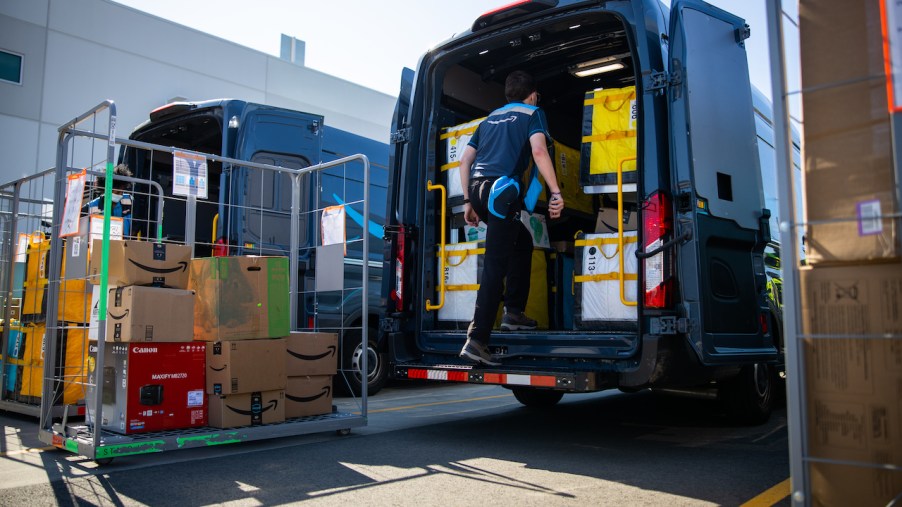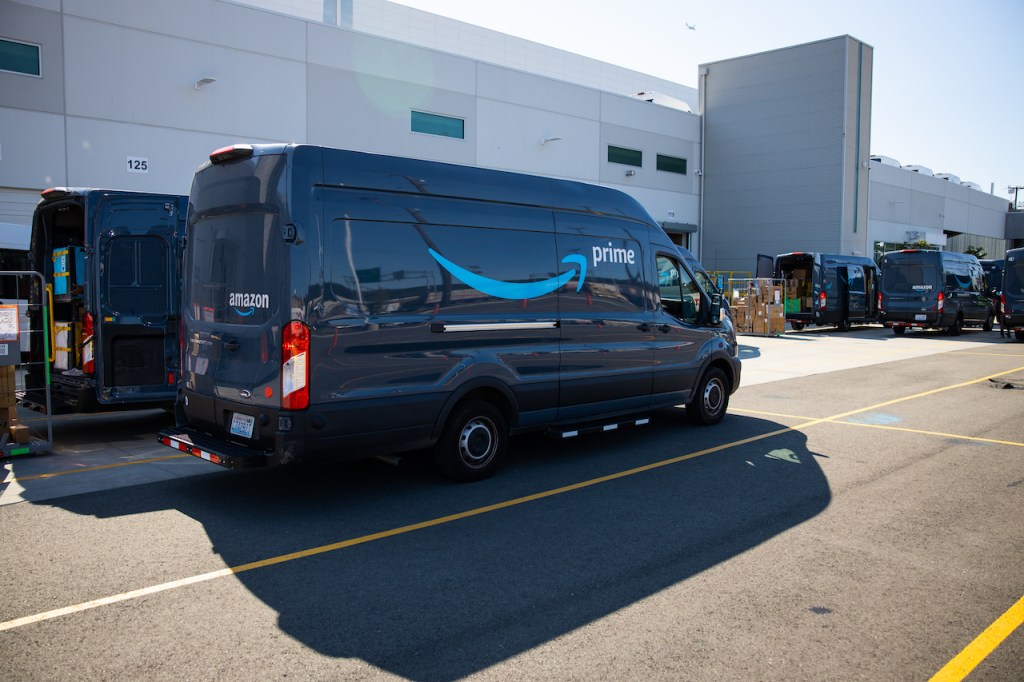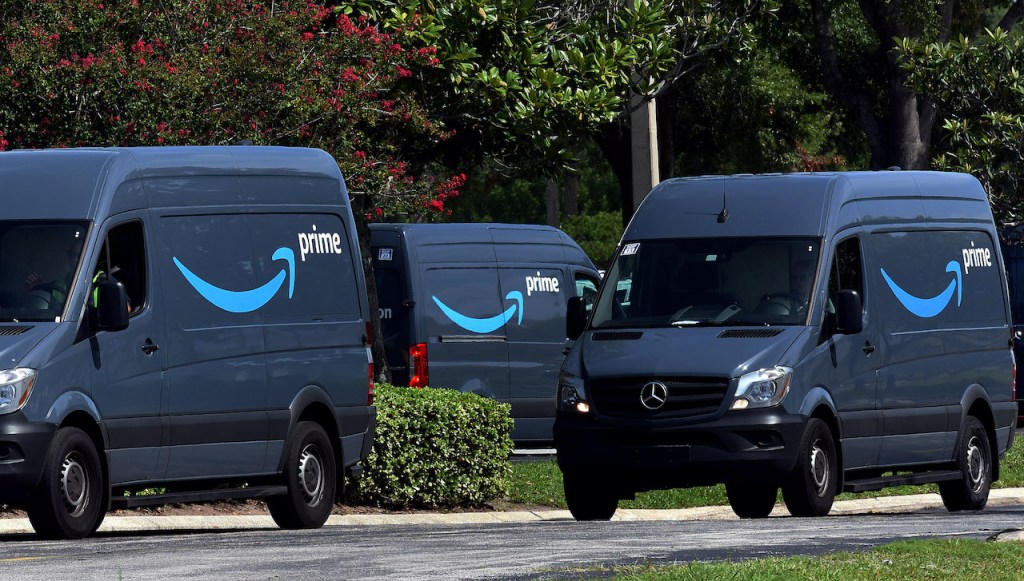
These Are the Vans That Deliver All of Your Amazon Packages
There is no greater sight than watching one of Amazon’s blue vans pull up with your latest purchase. Aside from playing the role of real-life Santa Claus, those vans form a part of Amazon’s vast delivery network. To get the job done, Amazon counts on a sizeable fleet of Ford Transit, Mercedes-Benz Sprinter, and Ram ProMaster vans. Amazon’s influence in the van industry is so strong that sales have skyrocketed for all three models.
Ford Amazon vans vs. Mercedes-Benz and Ram

While Ford’s rivalry with Ferrari in the mid-1960s was certainly more glamorous, it was mostly a battle over ego and bragging rights. These three carmakers are now battling to be the main transportation source for one of the most valuable companies in the world.
Let’s talk about hardware. The Ford Transit van comes with either a naturally aspirated V6 producing 275 hp or a 3.5-liter EcoBoost engine producing 310 hp. The short wheelbase Transit provides 246.7 cubic feet of cargo space, while the largest transit offers up to 487.2. The Ford then is like a muscle car, large and with plenty of power.
The Mercedes-Benz Sprinter comes as standard with a 2.0-liter four-cylinder engine producing 188 hp. While that power figure may be sufficient in a passenger car, it is hardly exciting in a van that weighs around 2,600 pounds without anything in it. The Sprinter has a maximum cargo space of 370.8 cubic feet, good enough for most Amazon deliveries. The Mercedes is the Miata MX-5 of the group: lighter, smaller, and slightly underpowered.
Like the Ford, the RAM ProMaster has a naturally aspirated V6 engine as standard, with 280 hp on tap. The ProMaster offers up to 462.9 cubic feet of cargo space. The standard Ram ProMaster cargo van weighs around 4,600 pounds. The Ram ProMaster is the midpoint between the others, being reasonably light with a decent amount of power but not very exciting.
These Amazon vans are selling like hotcakes

To deliver that new rice cooker you scored on Prime Day and everything else you throw money at, Amazon needs a massive fleet of vans. Although the exact amount of Amazon van orders are kept on a need-to-know basis, CarSalesBase’s yearly sales figures show massive sales increases.
In 2019, Ford managed to sell 153,868 Transit vans, a huge leap over the 117,577 sold in 2015. Mercedes-Benz sold considerably fewer Sprinters, with 31,851 sold in 2019. In contrast, the Sprinter sold 28,519 units in 2015. The Ram ProMaster also saw massive gains, with 56,409 sold in 2019 compared to 28,345 in 2015.
Car and Driver reported that as of December 2019, the Amazon fleet consisted of over 30,000 branded vans. Given the overall increase in online sales during the COVID-19 lockdowns, that number has likely increased drastically.
Amazon could ax all three carmakers for electric vans
As the auto world turns toward electric vehicles, Amazon is following closely behind. A recent deal with Rivian sees Amazon purchasing over 100,000 all-electric cargo vans. This spells potential trouble for Amazon’s army of blue vans, given that they could all end up getting the ax as the company embraces an electric future. It won’t be long before all of your packages arrive both quickly and silently.



